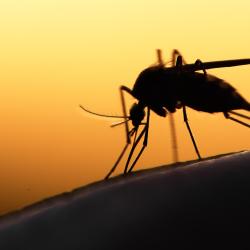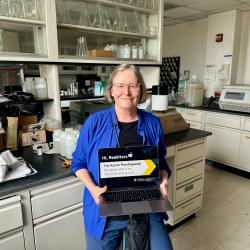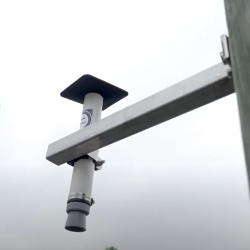Satellite Study Finds Unreported Sources of Toxic Air Pollution
Analysis of satellite data suggests up to 12 percent of global sulfur dioxide emissions have gone unreported
Using a new satellite-based method, scientists at the University of Maryland, NASA, Environment and Climate Change Canada, Dalhousie University, and the Harvard-Smithsonian Center for Astrophysics have located 39 unreported and major human-made sources of toxic sulfur dioxide emissions. All told, these previously unknown sources contribute up to 12 percent of the world’s sulfur dioxide emissions, the researchers say. The results appear in the May 30, 2016 issue of the journal Nature Geoscience.
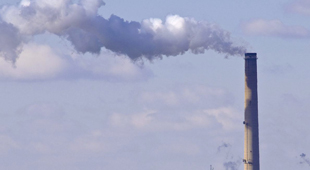 Sulfur dioxide, a known health hazard and contributor to acid rain, is one of six air pollutants regulated by the U.S. Environmental Protection Agency. Currently, sulfur dioxide is monitored using emission inventories drawn from ground-based pollution measurements and other indicators such as fuel usage. The inventories are used to evaluate air quality regulation policies and to anticipate how economic and population growth might shape future emissions scenarios.
Sulfur dioxide, a known health hazard and contributor to acid rain, is one of six air pollutants regulated by the U.S. Environmental Protection Agency. Currently, sulfur dioxide is monitored using emission inventories drawn from ground-based pollution measurements and other indicators such as fuel usage. The inventories are used to evaluate air quality regulation policies and to anticipate how economic and population growth might shape future emissions scenarios.
To develop comprehensive and accurate inventories, however, industries, government agencies and scientists must first know the location of pollution sources.
“Air quality forecast models rely on these inventories, but assembling the inventories is very painstaking work so the data is typically only updated about every 3-5 years,” said Can Li, an associate research scientist at UMD’s Earth System Science Interdisciplinary Center and a co-author on the study. “And that’s the case for the United States, where the reporting mechanism is pretty well established. But for many other parts of the world there is no such information. So that’s why we want to have an independent check.”
Data from the study was collected using NASA’s Aura spacecraft, which carries instrumentation capable of rapidly scanning an area’s atmospheric composition. The team then analyzed nine years’ worth of Aura data using software purpose-built for detecting sources of sulfur dioxide.
"We now have an independent measurement of these emission sources that does not rely on what was known or thought known," said Chris McLinden, an atmospheric scientist with Environment and Climate Change Canada in Toronto and lead author of the study. "When you look at a satellite picture of sulfur dioxide, you end up with it appearing as hotspots—bull’s-eyes, in effect—which makes the estimates of emissions easier."
The 39 unreported emission sources, found in the analysis of satellite data from 2005 to 2014, are clusters of coal-burning power plants, smelters and oil and gas operations found in the Middle East, Mexico and parts of Russia. In addition, some of the previously known sources in these regions yielded satellite-based estimates two to three times higher than reported emissions.
Altogether, the unreported and underreported sources account for about 12 percent of all human-made emissions of sulfur dioxide – a discrepancy that can have a large impact on regional air quality, McLinden said.
The research team also located 75 natural sources of sulfur dioxide: non-erupting volcanoes that slowly leak the toxic gas throughout the year. While not necessarily unknown, many volcanoes are in remote locations and not monitored, so this satellite-based data set is the first to provide regular annual information on these passive volcanic emissions.
“Quantifying the sulfur dioxide bull’s-eyes is a two-step process that would not have been possible without two innovations in working with the satellite data,” said co-author Nickolay Krotkov, an atmospheric scientist at NASA's Goddard Space Flight Center in Greenbelt, Maryland.
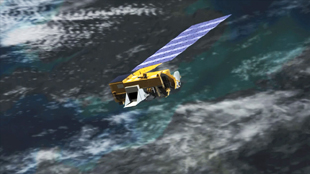 First was an improvement in the computer processing that transforms raw satellite observations from the Dutch-Finnish Ozone Monitoring Instrument aboard NASA's Aura spacecraft into precise estimates of sulfur dioxide concentrations. Krotkov and his team are now able to detect smaller sulfur dioxide concentrations, including those emitted by human-made sources such as oil refineries and medium-size power plants.
First was an improvement in the computer processing that transforms raw satellite observations from the Dutch-Finnish Ozone Monitoring Instrument aboard NASA's Aura spacecraft into precise estimates of sulfur dioxide concentrations. Krotkov and his team are now able to detect smaller sulfur dioxide concentrations, including those emitted by human-made sources such as oil refineries and medium-size power plants.
Being able to detect smaller concentrations led to the second innovation. McLinden and his colleagues used a new computer program to more precisely detect sulfur dioxide that had been dispersed and diluted by winds. They then used accurate estimates of wind strength and direction derived from a satellite data-driven model to trace the pollutant back to the location of the source, and also to estimate how much sulfur dioxide was emitted from the smoke stack.
"The unique advantage of satellite data is spatial coverage," said Bryan Duncan, an atmospheric scientist at Goddard. "This paper is the perfect demonstration of how new and improved satellite datasets, coupled with new and improved data analysis techniques, allow us to identify even smaller pollutant sources and to quantify these emissions over the globe."
###
This release is adapted from a release originally issued by NASA. For more information about, and access to, NASA's air quality data, visit http://so2.gsfc.nasa.gov/
The research paper, “Space-based detection of missing sulfur dioxide sources of global air pollution,” Chris McLinden, Vitali Fioletov, Mark Shephard, Nick Krotkov, Can Li, Randall Martin, Michael Moran and Joanna Joiner, was published in the journal Nature Geoscience on May 30, 2016.
This work was supported by NASA and Environment and Climate Change Canada. The content of this article does not necessarily reflect the views of these organizations.
Media Relations Contacts:
Matthew Wright, UMD:
301-405-9267, mewright@umd.edu
Steve Cole, NASA:
202-358-0918, stephen.e.cole@nasa.gov
Media Relations, Environment and Climate Change Canada:
844-836-7799, ec.media.ec@canada.ca
University of Maryland
College of Computer, Mathematical, and Natural Sciences
2300 Symons Hall
College Park, MD 20742
www.cmns.umd.edu
@UMDscience
About the College of Computer, Mathematical, and Natural Sciences
The College of Computer, Mathematical, and Natural Sciences at the University of Maryland educates more than 7,000 future scientific leaders in its undergraduate and graduate programs each year. The college's 10 departments and more than a dozen interdisciplinary research centers foster scientific discovery with annual sponsored research funding exceeding $150 million.



